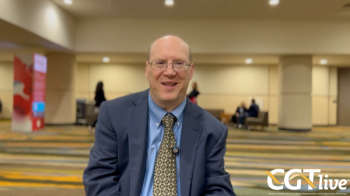
Jonathan Yen, PhD, on Showing Proof-of-Concept With Prime Editing in Sickle Cell Disease
The director of therapeutic genome engineering, St. Jude Children’s Research Hospital discussed recent research published in Nature Biomedical Engineering.
“Even with 40% editing, we've seen, from red blood cells we get from bone marrow or progenitor cells in the mouse, we can actually reduce sickling by 3-to 4- fold as well. So [prime editing] has a lot of promise for treating sickle cell disease and potentially opens the door to [treating] other diseases as well.”
New data from a preclinical study of prime editing in mouse models of sickle cell disease (SCD) have demonstrated proof-of-concept of the technology in reducing sickling of red blood cells. Researchers from St. Jude Children’s Research Hospital and the Broad Institute transplanted hematopoietic stem and progenitor cells (HSPCs) from patients with SCD into immunodeficient mice after prime editing and found that the SCD allele (HBBS) was corrected to wild type (HBBA) at frequencies of 15 to 41%. The research also showed minimal off-target editing at over 100 sites via unbiased genome-wide analysis. The findings are a proof-of-concept for a 1-time, non-viral prime editing treatment for SCD.
CGTLive spoke to Jonathan Yen, PhD, director, therapeutic genome engineering, St. Jude’s, and author on the study, to learn more about prime editing and its potential advantages in treating genetic diseases. He gave an overview of the study conducted and discussed mechanistic advantages over CRISPR/Cas9 and base editing technologies, including an ability to correct the HBBS allele directly to the wild type HBBA allele instead of changing it to a more benign mutation. He also stressed how prime editing does not create double strand breaks in DNA and may be a potentially safer genome editing option.
REFERENCE
Everette KA, Newby GA, Levine RM, et al. Ex vivo prime editing of patient haematopoieticstem cells rescues sickle-cell disease phenotypes after engraftment in mice. Nat. Biomed. Eng (2023). https://doi.org/10.1038/s41551-023-01026-0
Newsletter
Stay at the forefront of cutting-edge science with CGT—your direct line to expert insights, breakthrough data, and real-time coverage of the latest advancements in cell and gene therapy.

















































